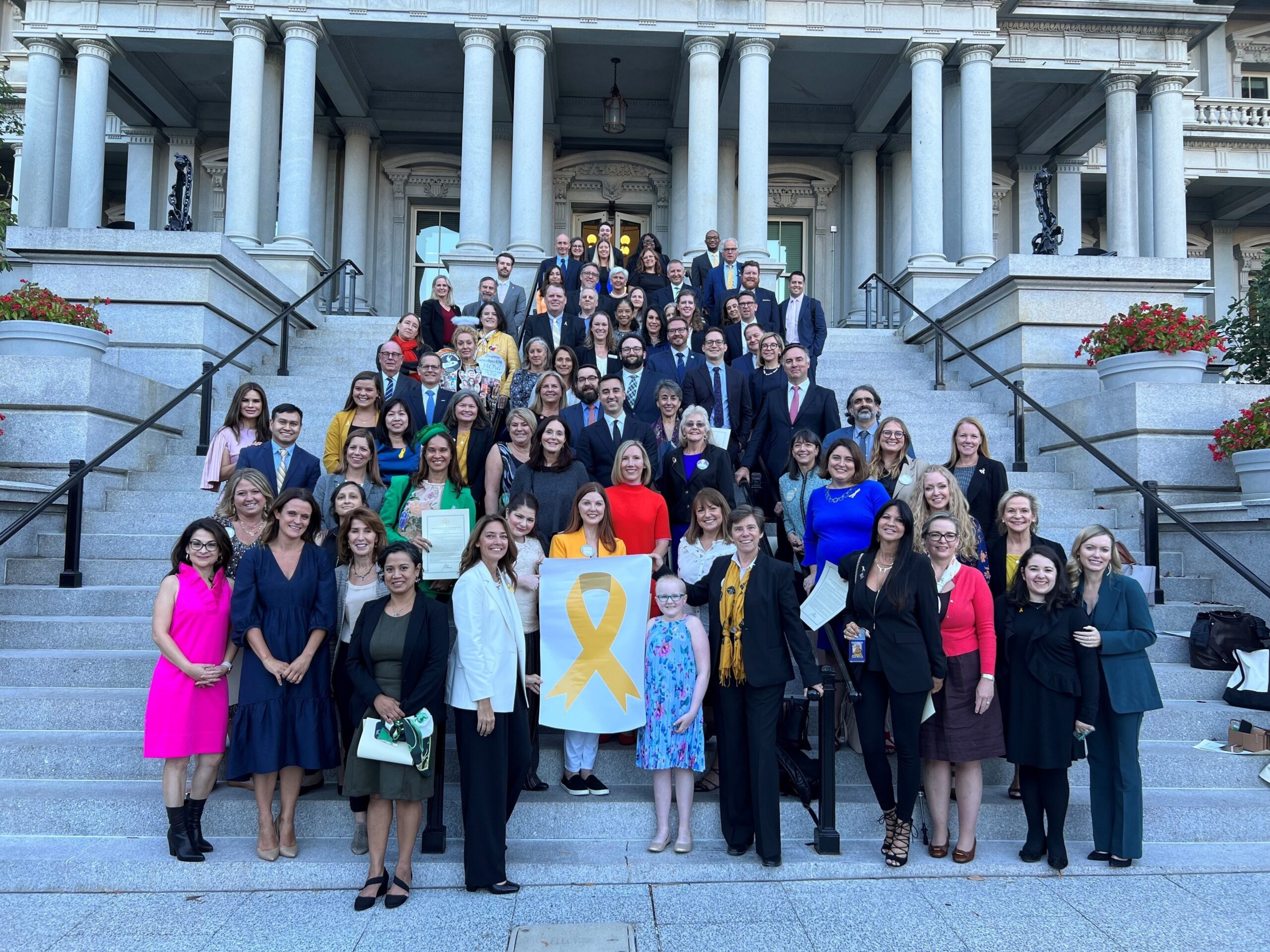In recognition of Childhood Cancer Awareness Month, the White House Office of Science and Technology Policy (OSTP) hosted a Cancer Moonshot Childhood Cancer Forum in September. Amanda flew to D.C. to help contribute to the forum, which focused on a variety of topics, including discussions about the Childhood Cancer Data Initiative (CCDI), the Research Acceleration for a Cure and Equity (RACE) Act, and the Childhood Cancer Survivorship, Treatment, Access, and Research (STAR) Act. The program also included spotlight stories and a discussion on keeping the patient at the center.
You can check out a recording of the Childhood Cancer Data Initiative (CCDI) forum here. (Note: the panel starts at around 17 minutes in, and Amanda’s portion starts around 38 minutes in.)
Read on to learn more about the discussion and an overview of the initiative.
What is the Childhood Cancer Data Initiative (CCDI) and why is it needed?
The goal of CCDI is to learn from every patient with cancer. It is an effort by the National Cancer Institute to bridge the gap between childhood cancer care and research data. Unfortunately, the incidence of childhood cancer is increasing, and while we have made great strides in some areas, we still have many childhood cancers with extremely dismal prognoses. Through CCDI, we are facilitating the portability of patient data to assist patients and their families so you can find the best care for their child.
This is incredibly important, especially since limited research funding has restricted our ability to gain larger insights into the cause and drivers of many childhood cancers. The initiatives that CCDI focuses on can create an impact by eliminating silos and broadening access to different types of data — including clinical, demographic, genomic, and outcome — which can facilitate and accelerate drug discovery and development.
CCDI is recognizing that the traditional model of research (i.e., defining a hypothesis and carrying out a defined experiment and collecting data to test that hypothesis) is insufficient to harness the full potential of emergent technologies. With this in mind, CCDI is supporting data generation before the hypothesis and question are even asked, and supporting the generation of new hypotheses and questions.
The premise of CCDI is that scaled integration of multimodal, asynchronous data will inform both new discoveries about mechanisms of cancer and new targets, as well as our capacity to interpret each new subject in real time. It will give us the opportunities to define treatments where none currently exist.
It will use data from each patient for the full circle of care and research. Much like the work we have been pioneering with the Children’s Brain Tumor Network, the CCDI will sequence each patient and that data will flow seamlessly between the clinic and research labs so we can best help that patient navigate care, while simultaneously improving research and treatment for all patients.
It’s particularly meaningful to see the NCI take on a project with the scale and scope of CCDI because it proves that the groundwork we have been laying for the last 9 ½ years was leading to national, and even global, sharing of data. Dragon Master’s position has always been to push forward into areas where we can innovate, prove the concept, and then hand it off to entities like the NCI that can sustain funding at a larger scale.
Some of CCDI’s key projects and priorities include:
- Standardizing data elements across the childhood cancer landscape.
- Extracting clinical data from EHRs for patients on clinical trials as well as those not on studies to improve efficiency and shorten clinical trial timelines.
- The Molecular Characterization Initiative (MCI), which is an initiative for solid tumors to get whole exome sequencing, along with DNA methylation and a gene fusion panel. The submitting clinician and the patient get the clinical report, and the source genomic data goes into CCDI within about 3 weeks. Which is much faster than data is typically made available to researchers. In the future, this could support the clinical data being shared on the same accelerated timeline. With this project, the goal is to truly empower precision medicine by working at an individual patient (n of 1) level.
- Expansion of the MCI to rare tumors and sarcomas.
- Initiatives through CCDI will mean access to better diagnostic tools for patients, especially those in more rural areas that might not have immediate access to a major medical center.
- Integration of EHR data would mean that patients could move seamlessly from one hospital to the next without having to worry about how their records get there. Right now, the burden is frequently on the patient’s family to gather records and get them delivered to the next hospital either themselves or via courier.
- CCDI is poised to provide the data that Pharma will need to comply with the RACE Act mandate. This data is needed to inform pediatric clinical trial development.
- CCDI data may ultimately support providing “control” data for clinical trials, which could significantly shorten trial timelines and reduce the number of patients required to participate in the control arms of trials.
Future priorities for the MCI include:
- expanding to other tumor indications beyond CNS and sarcomas
- facilitating access to biospecimens
- exploring new assay opportunities
- assisting providers with interpretation of results when needed at institution without in-house expertise in genomic sequencing
- aligning efforts with existing registries, especially important in the rare tumor environment
Hear more of the insights shared by watching the recording on YouTube here.

